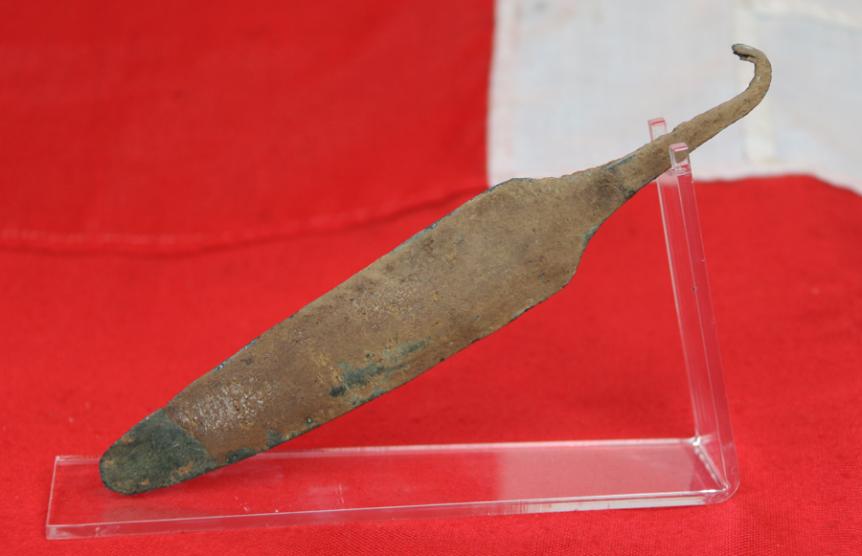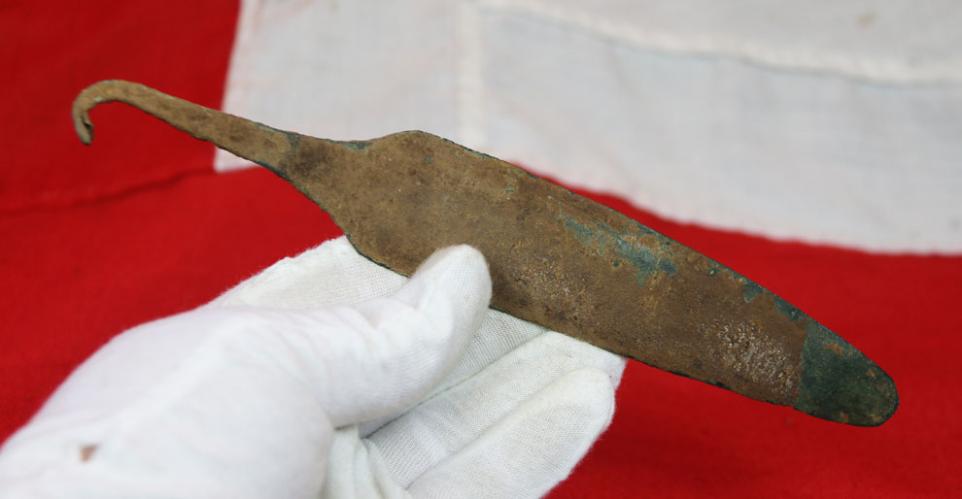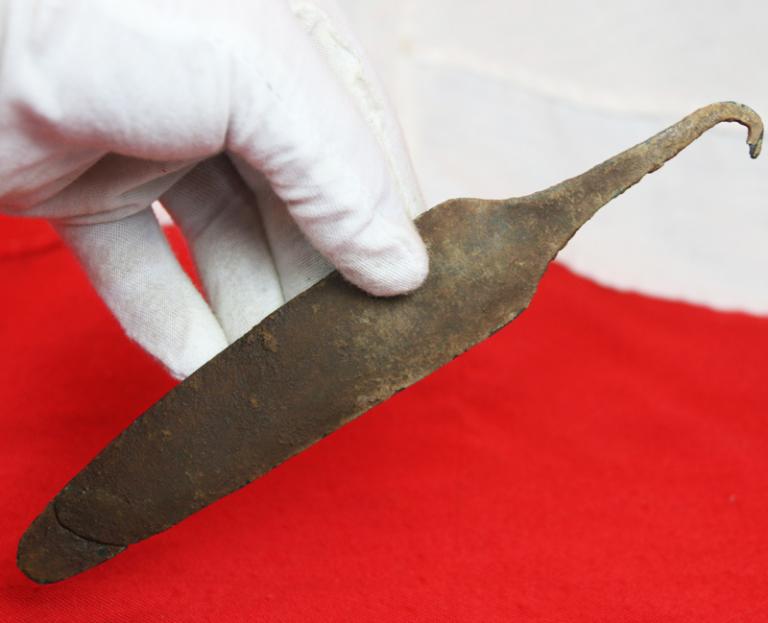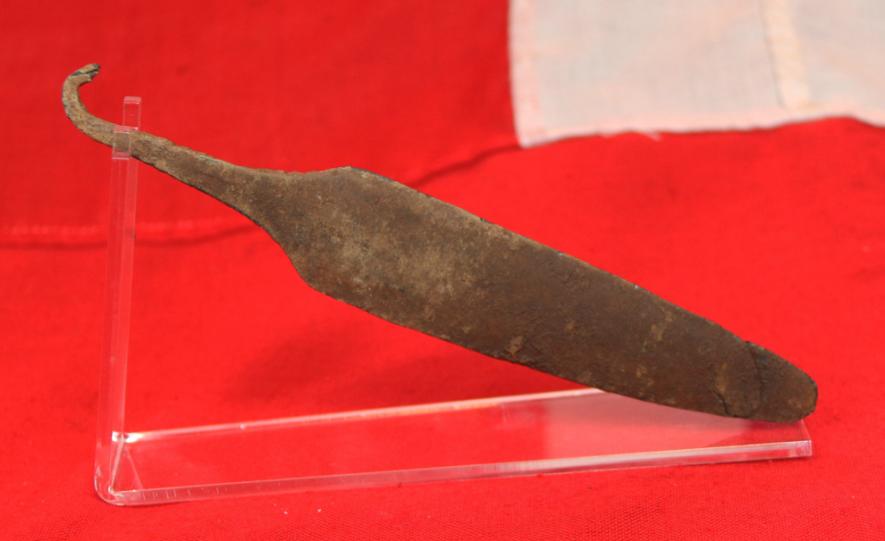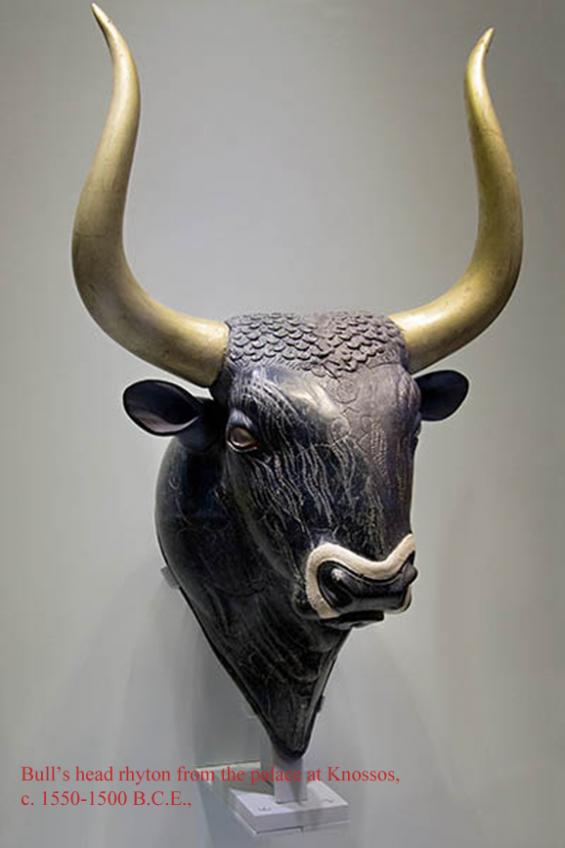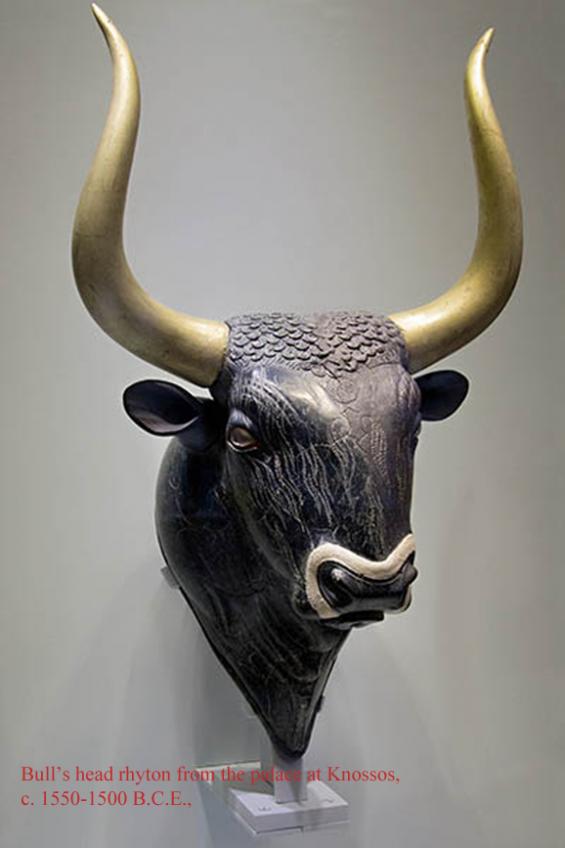A Wonderful & Rare Bronze Minoan Era Spear of Pre Ancient Greek Antiquity, Around 4000 Years Old. It Was Already At Least 1700 Years Old when Alexander The Great Began His Expedition to Conquer the Known World
Examples similar have been found elsewhere in Cyprus and Crete from the same era. Three similar were discovered some years ago in Vounous, Cyprus dated around 2300-2000 BC from the tomb 78 of the ancient cemetery in Vounous.
These kind of spear heads have a tang, ending in a hook, which was fixed into the wood. The blade was than further secured to the wood shaft by a wrap of laching cord.
Minoan Crete, named after the legendary King Minos, was ruled from great palaces, most of which were founded around 2000 BC. Material from the palace of Knossos is displayed in the British Museum, along with pottery, bronzes and stone vases from elsewhere in Crete, including from tombs and shrines. There is also evidence for writing in the form of the undeciphered Linear A script. The later Greek Bronze Age is named after Mycenae, the capital city of Agamemnon who according to myth led the Greeks at the siege of Troy. Mycenaean culture extended throughout mainland Greece, the Aegean islands and Crete. The Greek language is first recorded in this period in the Linear B script derived from Minoan Crete. Following the collapse of this civilisation in the 12th century BC, Greece entered a period of relative poverty and isolation when writing was forgotten. During this time, stories about the grand lifestyles of Mycenaean rulers continued to be told, influencing later poets such as Homer, whose Iliad and Odyssey were set in what we call the Bronze Age. In the epic poem The Odyssey, the Greek poet Homer praised an island that lies “out in the wine-dark sea . . . a rich and lovely sea-girt land, densely peopled, with 90 cities and several different languages.” This sophisticated place is not just a random spot in the Mediterranean—Homer is describing Crete, southernmost of the Greek islands and home to one of the oldest civilizations in Europe. Located some 400 miles northwest of Alexandria in Egypt, Crete has been inhabited since the Neolithic period, around 7000 B.C. The culture that developed there during the second millennium B.C. spread throughout the entire eastern Mediterranean world. Crete’s command of the seas would allow its stunning art and architecture to deeply influence the Mycenaean Greek civilization that would succeed it. Photo in the gallery of a Bull’s head rhyton ritual pouring vessel from the palace at Knossos, c. 1550-1500 B.C.E., in black steatite, jasper, and mother-of-pearl, 26 cm high (Archaeological Museum of Heraklion, From a private collection formed in the Netherlands before the 1980's .
Every single item from The Lanes Armoury is accompanied by our unique Certificate of Authenticity. Part of our continued dedication to maintain the standards forged by us over the past 100 years of our family’s trading
20cm long spear head
Code: 23582
495.00 GBP

